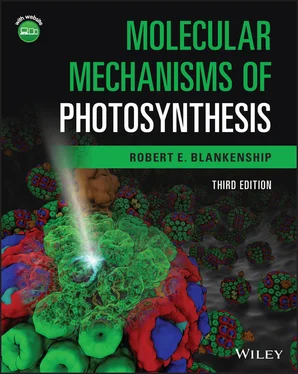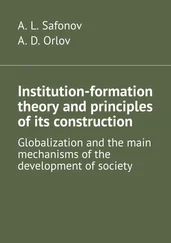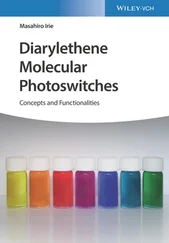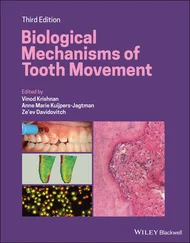12 Flores, E. and Herrero, A., (eds.) (2014) The Cell Biology of Cyanobacteria. Poole: Caister.
13 Frigaard, N. U. and Dahl, C. (2009) Sulfur metabolism in phototrophic sulfur bacteria. Advances in Microbial Physiology 54: 103–200.
14 Fuchs, G. (2011) Alternative pathways of carbon dioxide fixation: Insights into the early evolution of life? Annual Review of Microbiology 65: 631–658.
15 Gest, H. (1994) Discovery of the heliobacteria. Photosynthesis Research 41: 17–21.
16 Graham, J. E., Wilcox, L. W., and Graham, L. E. (2008) Algae, 2nd Edn. San Francisco: Benjamin Cummings.
17 Hanada, S. and Pierson, B. K. (2006) The family Chloroflexaceae. In: M. Dworkin, S. Falkow, E. Rosenberg, K.‐H. Schliefer, and E. Stackebrandt, (eds.) The Prokaryotes, 3rd Edn. Berlin: Springer‐Verlag, pp. 815–842.
18 Hohmann‐Marriott, M. F. and Blankenship, R. E. (2012) The photosynthetic world. In: J. J. Eaton‐Rye, B. C. Tripathy, and T. D. Sharkey, (eds.) Photosynthesis: Plastid Biology, Energy Conversion and Carbon Assimilation. Dordrecht: Springer.
19 Hunter, C. N., Daldal, F., Thurnauer, M. C., and Beatty, J. T., (eds.) (2009) The Purple Phototrophic Bacteria. Dordrecht: Springer.
20 Keeling, P. J. (2013) The number, speed, and impact of plastid Endosymbioses in eukaryotic evolution. Annual Review of Plant Biology 64: 583–607.
21 Kolber, Z. S., Plumley, F. G., Lang, A. S., Beatty, J. T., Blankenship, R. E., Van Dover, C. L., Vetriani, C., Koblizek, M., Rathgeber, C., and Falkowski, P. G. (2001) Contribution of aerobic photoheterotrophic bacteria to the carbon cycle in the ocean. Science 292: 2492–2495.
22 Liberton, M., Austin, J. R., Berg, R. H., and Pakrasi, H. B. (2011) Unique thylakoid membrane architecture of a unicellular N‐2‐fixing cyanobacterium revealed by electron tomography. Plant Physiology 155: 1656–1666.
23 Liu, D., Zhang, J., Lu, C., Xia, Y., Liu, H., Jiao, N., Xun, L., and Liu, J. (2020) Synechococcus sp. strain PCC7002 uses sulfide: Quinone oxidoreductase to detoxify exogenous sulfide and to convert endogenous sulfide to cellular sulfane sulfur. MBio 11: e03420‐19.
24 Madigan, M. T. (2006) The family Heliobacteriaceae. In: M. Dworkin, S. Falkow, E. Rosenberg, K.‐H. Schliefer and E. Stackebrandt, (eds.) The Prokaryotes, 3rd Edn. Berlin: Springer‐Verlag, pp. 951–964.
25 Madigan, M. T., Bender, K. S., Buckley, D. H., Sattley, W. M., and Stahl, D. (2017) Brock Biology of Microorganisms, 15th Edn. San Francisco: Pearson Benjamin Cummings.
26 Margulis, L. (1993) Symbiosis in Cell Evolution: Microbial Communities in the Archean and Proterozoic Eons. San Francisco: W. H. Freeman.
27 Matthijs, H. C. P., van der Staay, G. W. M., and Mur, L. R. (1994) Prochorophytes: The ‘other’ cyanobacteria. In: D. Bryant, (ed.) The Molecular Biology of Cyanobacteria. Dordrecht, The Netherlands: Kluwer Academic Publishers, pp. 49–64.
28 van de Meene, A. M. L., Hohmann‐Marriott, M. F., Vermaas, W. F. J., and Roberson, R. W. (2006) The three‐dimensional structure of the cyanobacterium Synechocystis sp. PCC 6803. Archives of Microbiology 184: 259–270.
29 Miyashita, H., Ikemoto, H., Kurano, N., Ikemoto, H., Chihara, M., and Miyachi, S. (1996) Chlorophyll d as a major pigment. Nature 383: 402.
30 Nelson, D. L. and Cox, M. M. (2017) Lehninger Principles of Biochemistry, 7th Edn. New York: W. H. Freeman.
31 Overmann, J. (2006) The family Chlorobiaceae. In: M. Dworkin, S. Falkow, E. Rosenberg, K.‐H. Schliefer, and E. Stackebrandt, (eds.) The Prokaryotes, 3rd Edn. Berlin: Springer‐Verlag, pp. 359–378.
32 Padan, E. (1979) Facultative anoxygenic photosynthesis in cyanobacteria. Annual Review of Plant Physiology 30: 27–40.
33 Palenik, B. and Haselkorn, R. (1992) Multiple evolutionary origins of prochlorophytes, the chlorophyll b‐containing prokaryotes. Nature 355: 265–267.
34 Partensky, F., Hess, W. R., and Vaulot, D. (1999) Prochlorococcus: A marine photosynthetic prokaryote of global significance. Microbiology and Molecular Biology Reviews 63: 106–127.
35 Soucy, S. M., Huang, J., and Gogarten, J. P. (2015) Horizontal gene transfer: Building the web of life. Nature Reviews Genetics 16: 472–482.
36 Taiz, L., Zeiger, E., Møller, I. M., and Murphy, A. (2018) Fundamentals of Plant Physiology Sunderland. Sunderland, MA: Sinauer Associates.
37 Tang, K.‐H. and Blankenship, R. E. (2010) Both forward and reverse TCA cycles operate in green sulfur bacteria. Journal of Biological Chemistry 285: 35848–35854.
38 Thiel, V., Tank, M., and Bryant, D. A. (2018) Diversity of chlorophototrophic bacteria revealed in the ohmics era. Annual Review of Plant Biology 69: 21–49.
39 Thompson, A. W., Foster, R. A., Krupke, A., Carter, B. J., Musat, N., Vaulot, D., Kuypers, M. M. M., and Zehr, J. P. (2012) Unicellular cyanobacterium symbiotic with a single celled eukaryotic alga. Science 337: 1546–1550.
40 Tsuji, J. M., Shaw, N. A., Nagashima, S., Venkiteswaran, J. J., Schiff, S. L., Hanada, S., Tank, M., and Neufeld, J. D. (2020) Anoxygenic phototrophic Chloroflexota member uses a Type I reaction center. https://doi.org/10.1101/2020.07.07.190934
41 Tsukatani, Y., Romberger, S. P., Golbeck, J. H., and Bryant, D. A. (2012) Isolation and characterization of homodimeric type‐I reaction center complex from Candidatus Chloracidobacterium thermophilum, an aerobic chlorophototroph. Journal of Biological Chemistry 287: 5720–5732.
42 Urbach, E., Robertson, D. L., and Chisholm, S. W. (1992) Multiple evolutionary origins of prochlorophytes within the cyanobacterial radiation. Nature 355: 267–270.
43 Wolk, C. P., Ernst, A., and Elhai, J. (1994) Heterocyst metabolism and development. In: D. A. Bryant, (ed.) The Molecular Biology of Cyanobacteria. Dordrecht: Kluwer Academic Publishers, pp. 769–823.
44 Yurkov, V. V. and Beatty, J. T. (1998) Aerobic anoxygenic phototrophic bacteria. Microbiology and Molecular Biology Reviews 62: 695–724.
45 Zeng, Y., Feng, F., Medová, H., Dean, J., and Koblizek, M. (2014) Functional type 2 photosynthetic reaction centers found in the rare bacterial phylum Gemmatimonadetes. Proceedings of the National Academy of Sciences USA 111: 7795–7800.
Chapter 3 History and early development of photosynthesis
Our understanding of the complex process of photosynthesis early in the twenty‐first century is the product of several centuries of effort on the part of countless dedicated scientists all over the world. In this chapter, we will discuss some of the landmark developments that form the underpinnings of our current picture. We will first discuss the developments that led to the determination of the chemical equation of photosynthesis, and will then examine certain key experiments that have given rise to the current mechanistic understanding of photosynthesis (Rabinowitch, 1945; Govindjee et al ., 2005; Hill, 2012; Nickelsen, 2015). This historical treatment is eclectic, rather than exhaustive, and is designed to give some sense of the path that the field has taken to the present state and to highlight a few of the personalities who have brought us here, rather than to enumerate all the developments that have taken place and all the individuals who have contributed.
3.1 Van Helmont and the willow tree
In the 1640s, a Flemish physician named Jan Baptista van Helmont (1577–1644) planted a willow tree in a tub of earth, which weighed 200 lbs. For five years, he watered the tree and weighed the leaves that fell off each autumn. At the end of that time, he pulled the tree from the tub and weighed both the tree and the tub of earth. The tub of the earth was essentially unchanged in weight, having lost only two ounces, but the tree and its leaves weighed 169 lbs. He concluded that the tree had come from the water that he had given the tree, rather than from the “humus” of the soil, which was the ancient view derived from Aristotle (384–322 BC). Van Helmont's conclusion was only partially correct, as the mass of a plant derives largely from both water and carbon dioxide, the latter of which was completely unknown at the time. However, van Helmont's emphasis on analysis by weighing was considerably ahead of its time, as the law of conservation of matter in chemistry, which is based on a careful weighing of reactants and products of chemical reactions, was not formulated by the French chemist Antoine Lavoisier (1743–1794) for over another 100 years.
Читать дальше












